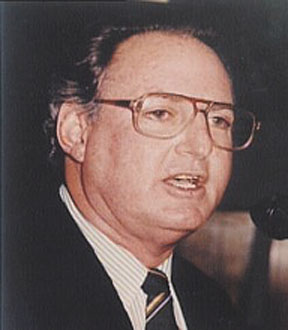By Tony Cozier
PRESSURE from high places in Barbados and Antigua and Barbuda and behind-the-scenes persuasion of the England and Wales Cricket Board (ECB) are a couple of the reasons advanced for the West Indies Cricket Board’s reported review of its original choice of Jamaica, Trinidad and Guyana for England’s three Tests next year.
WICB president Dave Cameron and his directors would undoubtedly have heard, directly or indirectly, from the relevant governments, from leaders of tourism, from the territorial boards and possibly even from ECB chiefs, if only in polite whispers, of their concern over the original absence of Barbados and Antigua from the Test schedule.
If there have been such interventions, it is for the WICB alone to determine what’s in its best interest.
Welcome as it is, it cannot concern itself with the boost to the relevant economies through the spending on hotels, in restaurants and rum shops and on taxis of the thousands of travelling England cricket fanatics.

Had there been an approach from the ECB – and I can’t think that there would have been, however informal – the WICB hopefully made it clear that it alone decides where its home Tests are located.
It is worth pointing out that the West Indies, once the most popular team in the international game, have not been given a Test by Australia Cricket in Melbourne or Sydney since 2000. It was only the late withdrawal of Cardiff that returned them to Lord’s for the 2012 Test.
The ESPNcricinfo website that first reported the initial choice of venues has now quoted an unnamed WICB spokesman as confirming that “there is an ongoing bidding process” for hosting the England Tests.
He listed criteria such as the suitability of “pitch and outfield, spectator capacity, accommodation, ground travel, logistics and airlift”. These, he indicated, would be more decisive in coming to a final decision than necessarily the highest financial bid.
Barbados and Antigua certainly qualify by such standards as do Jamaica, Trinidad and, to a lesser extent, Guyana.
The clincher, ultimately, would fall under the category of “spectator capacity”, with the pertinent rider “the likelihood of filling it for all five days”.
The increasing influx of England supporters for Barbados and Antigua Tests over the past 33 years have guaranteed Kensington and the two Antigua venues are packed for the duration of the matches, five days or less. Seats are booked and paid for in advance.
There were there is their numbers in March for the ODIs in Antigua and the T20s in Barbados.
They have come to outnumber, by as much as three to one, West Indies supporters, whose once passionate involvement with their team has gradually waned with its gradual decline.
Grounds everywhere, Barbados and Antigua included, are often less than quarter-filled for Tests not involving England. There were more fans at the Caribbean volleyball championships at the Garfield Sobers Sports Complex gymnasium than at Kensington for any day of the simultaneous 2008 Test against Australia.
Of course, we don’t like it.
There is only one Test in my long years of covering West Indies cricket that I have left before the final rites. It was at Kensington in 2004 as the Barmy Army filled the air with their taunting chants as England closed in on their victory target of 93 that gave them an unassailable 3-0 lead in the series. Brian Lara’s unbeaten 400 in the next match at the ARG was only partial compensation.
It is the financial reality. Regardless of that Kensington result, the WICB was making a sizeable deposit into its bank account at the end.
An objection has been raised in some quarters that such discrepancy in support favours England, undermines West Indies’ confidence; it was the same, in reverse, when West Indians packed into the Oval and Lord’s to celebrate the dominance of the Lloyd and Richards teams. The stark trust is that England were then weak and West Indies strong. Now it’s vice-versa.
As with all other administrations, the bottom line is the WICB’s primary concern.
The Red Stripe Bowl, sponsored by the brewers of Jamaica’s world famous beer, was held in Jamaica through its duration in the 1990s.
Recently, the WICB committed its annual Fifty50 tournament, the Pro50, exclusively to Trinidad for three years following sponsorship from the government and the Trinidadian insurance company. Nagico.
Barbados’ won a successful bid to stage semi-finals and final of the T20 tournament in 2012 when it was under the WICB’s aegis.
The issue of granting Test matches has become increasingly complex over the years.
Until Antigua’s entrance in 1981, it was straightforward.
Kensington, Bourda, the Queen’s Park Oval and Sabina Park were the grounds used. With five Tests each series (up to 1958, restricted to England, Australia, India and Pakistan), it was simply a matter of which would be allocated two; Queen’s Park and Sabina were the favoured ones.
The addition of New Zealand, Sri Lanka, Zimbabwe and Bangladesh to the list, the recent reduction to three, or two, Tests a tour and the erection of world-class stadiums in St.Lucia, St.Vincent, Grenada, St.Kitts and Dominica spread the net wider. All have staged Tests; the introduction of limited overs internationals eased the demand.
Add charges of insularity and political favour to the mix and the conundrum confronting the WICB even before a ball is bowled is understandable.





